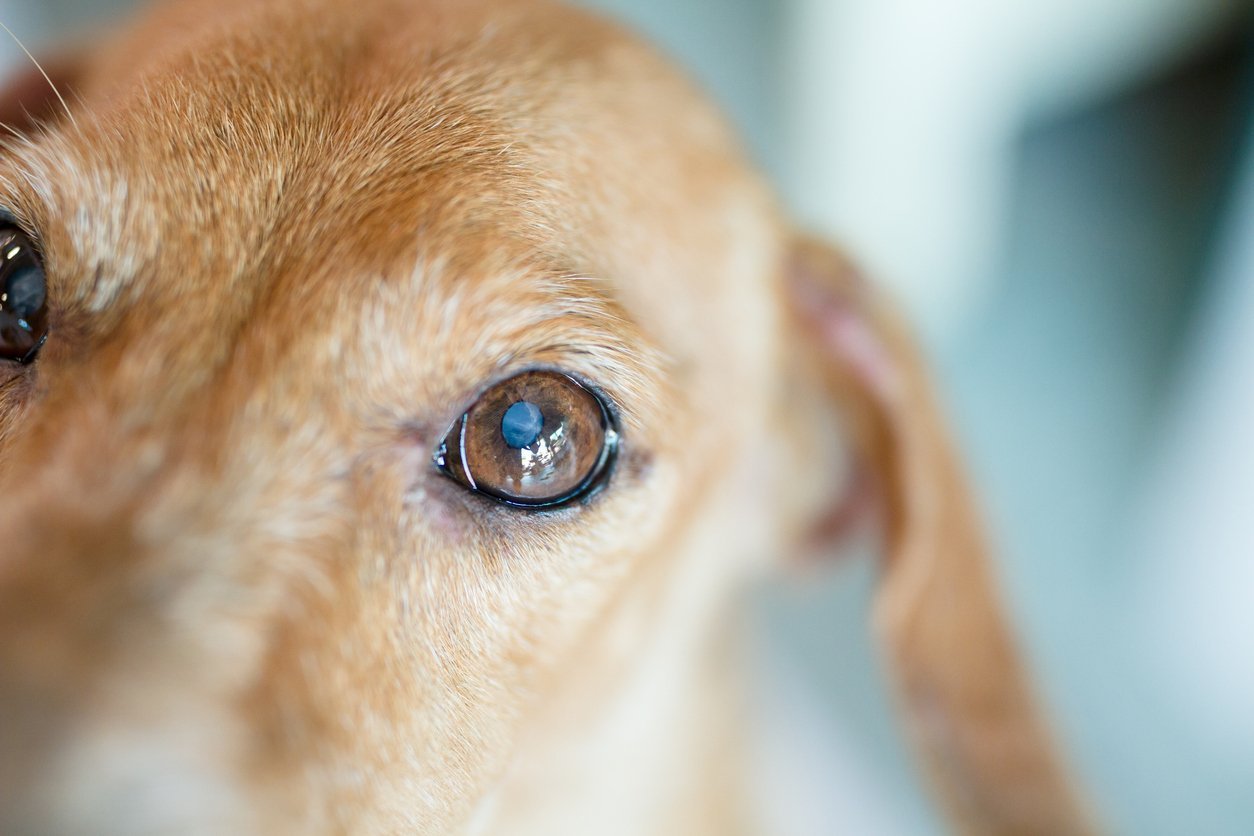Table of Contents
Every pet parent experiences it now and again: dog health jitters.
Maybe you just adopted a puppy from the shelter and you’re trying to figure out how to keep your new family member happy and healthy.
Or you might be a long-time dog owner who’s noticed that your senior dog needs a little extra attention nowadays.
The long and short of it is that you want to be the best dog parent around, so you’re looking for some dog health advice.
We’ve got you covered.
There are dog health problems every pet owner should know about. We’re going to give you all the info you need on these problems, as well as drill down into some health problems common to specific breeds.
But don’t worry. We’re not just going to leave you hanging with the problems.
We’ll also share some helpful preventative tips and treatment options.
Let’s find out how to keep your dog healthy!
Brief on Dog Health Considerations
One of the most important things you can do for your pet’s health is bring your dog to routine vet check-ups once a year (twice a year if you have an older pooch).
Check-ups give you the opportunity to discuss your dog’s health with your vet. This may involve discussing your dog’s weight, activity levels, appetite, or anything else you’re concerned about.
During your appointment, your dog’s vet will likely perform a physical exam, recommend vaccinations, and prescribe preventative medicines (such as heartworm medication) as needed.
Additionally, it’s helpful to know some of the signs that your dog might be feeling under the weather. While symptoms differ based on the root cause of illness, certain signs may indicate your dog could use a trip to the vet:
- Loss of appetite
- Signs of dehydration
- Diarrhea
- Lethargy or fatigue
- Runny eyes or nose
- Coughing or wheezing
- Trouble using the bathroom
- Unexpected weight loss or weight gain
If you’re unsure about whether your dog’s symptoms warrant a trip to the doctor, share a conversation with your vet. She can provide you with guidance on whether you should bring your pup in for a visit.
Common Dog Health Problems & Symptoms
Curious about a more specific dog health problem? Below is a list of the most common dog health problems and their symptoms. We’ve also included preventative measures so you can minimize the likelihood your dog suffers from one of these setbacks in the first place.
1. Cataracts

Have you noticed your dog’s eyes looking a bit less clear and bright and instead more… milky white? This may be a sign of developing cataracts.
The primary symptoms of cataracts are a cloudy or milky appearance to the eye and signs of blindness, such as your dog regularly walking into furniture.
As cataracts get worse, your dog may eventually become completely blind because light is no longer able to reach the retina.
Cataracts can be caused by:
- Diabetes
- Previous trauma to the eye
- Genetics
- Glaucoma or other eye issues
Unfortunately, cataracts are not preventable. Even with the best of care, your dog may develop them; however, there are several measures you can take to try and reduce their likelihood:
- Regularly examine the health of your dog’s eyes, both at home and at the vet.
- Avoid injuries to the eye.
- Feed your dog a diet rich in antioxidants.
If your dog develops cataracts, your vet may recommend surgery to partially or fully restore your dog’s sight.
2. Arthritis
Arthritis is another common pet health concern, with 25% of dogs being diagnosed with arthritis in their lifetime. This condition is caused by the deterioration of cartilage, which leads to pain and inflammation.
The following are signs your dog may have arthritis:
- Slow to get up, especially in the morning
- Swelling in joints
- Less active
Previous injuries and certain health conditions, like hip dysplasia, can make your dog more prone to developing arthritis.
Fortunately, there are certain preventative measures you can take to help stop or slow the onset of this condition:
- Keep your dog at a healthy weight.
- Encourage gentle exercises to strengthen joints, tendons, and muscles.
- Feed your dog joint supplements.
Dog joint supplements that include active ingredients like glucosamine, chondroitin, MSM, and hyaluronic acid are especially helpful in preventing and treating signs of arthritis. The bullets below explain the benefits of each of these ingredients:
- Glucosamine: repairs cartilage.
- Chondroitin: prevents further cartilage deterioration.
- MSM: reduces pain and inflammation.
- Hyaluronic acid: increases viscosity of synovial fluid (AKA joint lubricant).
We’re partial to TRI-ACTA and TRI-ACTA H.A. for preventing and treating arthritis because it contains all the ingredients listed above (and no fillers!). We’ve included a handy chart below that outlines the differences between these two supplements in case you’re trying to decide which one is right for your dog.
| Supplement | Benefits |
| TRI-ACTA for Pets |
|
| TRI-ACTA H.A. for Pets |
|
3. Ear Infections
Listen up! Another common dog health problem is ear infections. Dogs can get ear infections in their outer, middle, and/or inner ears. Middle and inner ear infections are especially dangerous.
Ear infections are caused by bacteria and yeast entering the ear. Certain conditions may make a dog more likely to develop this condition, such as endocrine or autoimmune disorders.
Some signs your dog may have an ear infection are listed below:
- Shaking head
- Scratching ears
- Whining or acting uncomfortable
- Discharge
- Odour
Your vet may prescribe a medicated cleanser or topical treatment to resolve an ear infection.
To help prevent ear infections, try to keep your dog’s ears dry since moisture can lead to bacteria growth, and avoid the build-up of wax. Using an at-home ear cleaning solution made for dogs can help reduce wax buildup.
4. Kennel Cough

Pretty sad to imagine a dog coughing, isn’t it? Unfortunately, it happens. Kennel cough is caused by bacterial and viral infections and results in your dog having a hacking cough.
Kennel cough is especially common at dog shelters or other places where dogs are in close quarters. Additionally, certain conditions (such as being highly stressed) can weaken your dog’s immune system and make him more likely to contract kennel cough.
Some signs your dog may have a case of kennel cough are listed below:
- Coughing
- Wheezing
- Signs of cold (for example, runny nose and eyes)
To help prevent kennel cough, minimize stress and try to avoid placing your dog in cramped conditions, such as a crowded daycare.
Additionally, keeping your dog up-to-date on vaccinations for common viruses, such as Bordetella, can help prevent the transmission of kennel cough.
5. Diarrhea
Everyone gets the runs now and again. Your dog’s no different. Diarrhea can be caused by something as benign as introducing your dog to a new type of kibble, or something more serious like intestinal parasites.
If your dog has diarrhea, you may notice the following about his stool:
- Runny consistency
- Discoloured
- May contain mucus
Healthy dog poop should be brown, relatively firm, and uniform in size. If you notice any of the stool colours listed in the chart below, this could be a sign that something’s amiss.
| Colour | Possible Indications |
| Yellow |
|
| Grey or Greasy |
|
| Black |
|
| Red |
|
While diarrhea isn’t entirely preventable, there are several things you can do to try to reduce its likelihood.
- Introduce new foods/kibble slowly.
- Keep any dangerous and/or toxic items out of reach of your dog.
- Feed your dog a bland diet, like white rice, if his stomach is upset.
Call your vet immediately if you think your dog has eaten something toxic or if you notice dark-coloured, bloody stools.
6. Fleas and Ticks

Even though they’re minuscule, fleas and ticks can wreak havoc on your dog’s health.
These tiny insects embed in your dog’s fur and skin and use your dog’s blood as a food source. They’re basically insect vampires, with fleas being able to consume up to 15x their weight in blood.
Fleas cause intense itching and transmit parasites like a tapeworm. And while ticks may not be as irritating to your dog as fleas are, they can cause serious issues like Lyme disease.
Some symptoms your dog may be housing fleas or ticks are listed below:
- Itching
- Dark specks (flea droppings) or white specks (flea eggs) are present
- Scabs
- Seeing fleas or ticks on your dog’s body
When it comes to battling fleas and ticks, the best defence is a good offence. The following are several ways you can help prevent fleas and ticks from invading:
- Use a flea collar.
- Use a topical flea and tick medication once a month.
- Regularly wash dog bedding and vacuum your home.
Last but not least, try to avoid tall, grassy areas where fleas and ticks live. Though it may torture your dog to keep him from frolicking in fields, it really is best for him in the long run.
7. Heartworms
There’s nothing heart-warming about heartworms, which can be incredibly dangerous for your dog’s health.
Heartworms are parasitic worms that live in a dog’s heart, lungs, and blood vessels. They are transmitted through mosquito bites and can cause heart failure and damage to other organs.
Early on, your dog may not show any signs of heartworms. As they get larger though, your dog may have some or all of these symptoms:
- Cough
- Reluctance to exercise
- Lethargy
- Decreased appetite
- Weight loss
The best way to prevent heartworms is to feed your dog a preventative medicine once per month. Heartworm preventatives can come in the form of chewable tablets or injections and may require a vet prescription.
8. Broken Bones
Broken bones are a common health injury for dogs, especially among senior dogs who have more brittle bones than their younger counterparts.
The following are signs your dog may have a broken bone:
- Sudden lameness
- Signs of pain (yelping, tenderness)
- Swelling of limb
- Not putting weight on a limb
If you think your dog has a broken limb, REMAIN CALM. Dogs pick up on your energy and may start to panic if you do.
Don’t try to reposition your dog’s limb, which can cause more damage. Instead, call your vet immediately to determine the next steps.
The best way to prevent broken bones is to keep your dog in safe environments and watch for potential hazards during playtime.
9. Obesity

While a dog with a double chin may be highly endearing, being overweight is not good for your dog’s health and longevity. Unfortunately, 25 to 35% of dogs are considered obese.
Obesity can shorten your dog’s life and increase the likelihood of them developing other diseases, such as cancer, osteoarthritis, and high blood pressure.
The following are signs your dog may be overweight or obese:
- You can’t feel his ribs.
- He pants excessively.
- He has abdominal sagging.
- He has reduced energy.
Fortunately, obesity is one of the easiest dog health conditions to prevent. Using some of the preventative measures below should help keep your dog at his ideal weight:
- Limit treats.
- Measure your dog’s kibble and only feed the recommended amount per day.
- Try a raw food diet (talk with your vet first to see if this is a good option for your pup).
- Aim for at least 30 minutes of exercise a day, whether that’s going for a walk, playing fetch, or swimming at the lake.
Keep in mind that if your dog is a larger or particularly active breed, he will require more exercise than just 30 minutes. If your dog is already looking a little heavy, consult with your vet to create a comprehensive weight management plan
10. Cancer
Cancer sucks and is, unfortunately, one of the leading causes of death in older dogs. Dogs can be diagnosed with many of the same types of cancers humans get, including lymphoma, liver cancer, and skin cancer.
The most common type of dog cancer is hemangiosarcoma (cancer in the blood vessels).
Some signs your dog may have cancer are listed below:
- He has wounds that don’t heal.
- He has growths or tumours.
- He has abnormal bleeding.
- He is lethargic and/or has lost his appetite.
While you can’t prevent your dog from getting cancer, encouraging a healthy lifestyle can help reduce the likelihood of your dog getting sick with this disease. Be sure to feed your pup a healthy diet and provide him with regular exercise (at least 30 minutes a day).
Dog Health Questions & Answers (by Breed)
Looking to learn more about your dog’s specific breed? Below we provide you with details on some of the most common dog health problems by breed, as well as prevention tips for dealing with these problems.
Which dog breeds are most likely to suffer from hip dysplasia?
Large dog breeds, overweight dogs, and purebred dogs are most likely to suffer from hip dysplasia, though dogs of any size and pedigree can be diagnosed with it. The dog breeds listed below are particularly susceptible to this condition:
- Golden Retrievers
- Great Danes
- German Shepherds
- St. Bernards
- Rottweilers
- French Bulldogs
- Alaskan Malamutes
Hip dysplasia occurs when the ball and socket joints in your dog’s hips don’t develop properly. Unfortunately, this condition isn’t preventable, but there are certain measures you can take to manage the condition.
Physical therapy and weight loss can help reduce stress on your dog’s hips. Similarly, avoiding overexertion during exercise can help minimize the likelihood of aggravating your dog’s hip joints.
One of the best ways to manage the symptoms of hip dysplasia is by feeding your dog a joint supplement. Joint supplements help reduce inflammation in your dog’s hip joints, as well as prevent cartilage deterioration.
Additionally, joint supplements can help reduce the likelihood that secondary conditions, like arthritis, will form as a result of this condition.
Look for supplements that include ingredients like glucosamine, chondroitin, MSM, and hyaluronic acid. TRI-ACTA H.A. for pets includes these active ingredients and is a great option for treating the pain and inflammation caused by hip dysplasia.
What are common dog health problems for German Shepherds?

German Shepherds are especially prone to thyroid issues, such as hypothyroidism. Hypothyroidism occurs when thyroid glands don’t produce enough hormones, which causes your dog’s metabolism to slow.
If your German Shepherd has hypothyroidism, you may notice the following symptoms:
- Dull coat
- Lethargy
- Weight gain
- Intolerance to cold
While hypothyroidism can’t be prevented, your vet may prescribe your dog thyroid hormones to help regulate hormones and reduce symptoms of this condition.
As a larger dog breed, German Shepherds are also susceptible to developing arthritis in their joints. Along with keeping your dog at a healthy weight and giving him regular exercise, a great preventative to developing arthritis is feeding your dog a joint supplement like TRI-ACTA.
In particular, glucosamine can help to repair cartilage and MSM can help reduce pain and inflammation. If your dog already has arthritis, supplements like TRI-ACTA H.A. can also assist with treating this condition.
What are common dog health problems for Beagles?
If you have a Beagle, then you know they eat fast. Beagles are notorious not only for their speed-eating but also for eating everything in sight. As a result, this can make them more likely to be overweight or obese than other dog breeds.
Given his smaller frame, you’ll need to be extra careful to avoid overfeeding your Beagle. Just a little extra food can have weight repercussions.
The best preventative to obesity is a healthy diet and providing your dog with a minimum of 30 minutes of exercise a day, especially as he gets older and becomes less active.
Beagles are also susceptible to Cherry Eye, which occurs when a tear gland of a dog’s third eyelid gets inflamed and moves out of place. A bright red mass that looks like (you guessed it) a cherry will be visible.
While this condition can’t be prevented, your vet can treat your dog’s Cherry Eye with surgery.
And just like German Shepherds, Beagles are also more likely to have thyroid conditions like Hypothyroidism. This condition may be a result of inbreeding, so it can’t be prevented but is treated with a thyroid supplement.
What are common dog health problems for Golden Retrievers?

Unfortunately, Golden Retrievers have the highest rate of cancer among all dogs. They have an especially high prevalence of Hemangiosarcoma, which is aggressive cancer that affects blood vessels.
As we mentioned above, there’s nothing you can do to completely prevent cancer. Trying to keep your dog healthy overall, such as through regular exercise and a healthy diet, can help minimize your Retriever’s risk of getting cancer.
Additionally, staying vigilant and watching for early signs of cancer, such as decreased appetite, tumours, and lethargy, can help you catch and treat cancer early.
Golden Retrievers are also especially susceptible to cataracts. Keep in mind the preventative measures we mentioned above if you have a Golden, including conducting regular eye checks and feeding them a diet rich in antioxidants.
Why do purebreds have more health problems?
Purebreds often have more health problems than mutts or crossbreed dogs due to inbreeding. Inbreeding (mating a dog with a close relative) reduces diversity in genes and increases the likelihood of passing on negative health traits to future generations.
For example, Labradors are three times more likely to suffer from a luxating patella (dislocated kneecap) than other dog breeds due to a genetic abnormality in their knees. This characteristic gets passed down through generations, continuing to increase the rate at which Labradors suffer this condition.
Similarly, French Bulldogs are purebred dogs especially prone to Brachycephalic syndrome, which makes it difficult to breathe.
This condition is common in dogs that have been bred for the trait of short noses. They have all the same nose tissues as regular dogs, but far less room to put it!
While you can’t prevent conditions like luxating patella or Brachycephalic syndrome, you should research a dog’s lineage if you plan to adopt a purebred animal. This can help you identify if certain genetic abnormalities are likely to be inherited.
Of course, there are always dogs in need of a home at shelters. Adoption can be a great way to give a dog some love while reducing the likelihood of inheriting certain health conditions.
What’s Next?
Many conditions can affect your dog’s health, from obesity to cancer.
But that doesn’t mean you should worry.
Preventative measures go a long way in ensuring your dog stays happy and healthy for as long as possible. Whether you choose to feed your dog a supplement or give them more exercise, you have the dog health tools available to be a great pet parent.
And while seeing your dog uncomfortable or in pain is never fun, you now have the information to identify, prevent, and treat these conditions.
Want to learn even more? Check out our blog and read more about how to keep your dog healthy and happy.
Newsletter Signup
Subscribe to our newsletter to receive the latest news and exclusive offers.
.jpg?height=2000&name=Cliick_Integricare-DISPLAY-REVISEDV2%20(1).jpg)
Proactive & Therapeutic Joint Supplements
When given daily, Integricare joint supplements recover bone and joint injuries faster and help prevent mobility injuries from happening in the first place.











